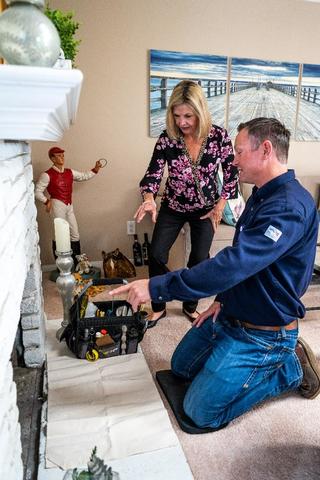Gas Appliance Safety
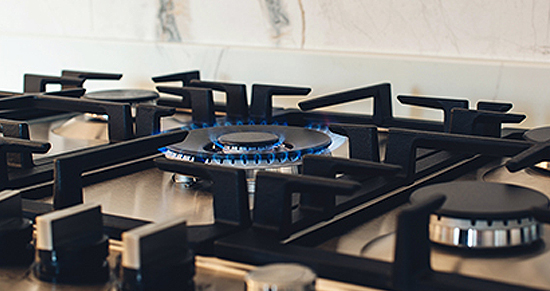
Gas appliance safety tips
For safety and efficiency, it’s important to keep your natural gas appliances in good working order and use them properly. The following tips can help you prevent carbon monoxide poisoning, fires and other hazards to your health and safety.
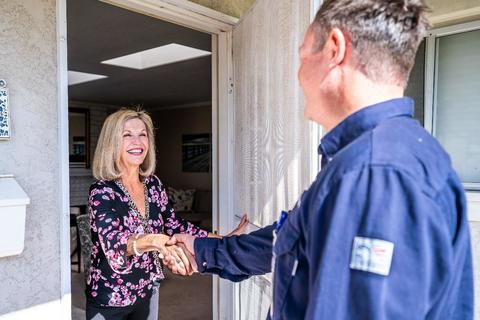
- Have your gas appliances inspected every year by a qualified, licensed professional. If you receive natural gas service from us, you can schedule a no-cost annual safety checkup with us.
- Take care of any needed maintenance and repairs.
- Keep the area around gas appliances clean, well-ventilated and free of any items that might block normal airflow.
- Never store or use flammable products in the same room as gas-burning or heat-producing appliances. Flammable products include gasoline, spray paints, solvents, insecticides, adhesives, foggers, varnish, cleaning products and other pressurized containers.
- Keep rags, mops, paper and other combustible items stored away from appliances.
- Never use your oven, range or outdoor barbecue to heat your home.
- Refer to the owner’s manual for specific details on installation, use and maintenance of each appliance.
- Check for safety recalls that may affect your appliances at the U.S. Consumer Product Safety Commission website or by calling the CPSC at 1-800-638-2772; TTY (301) 595-7054.
Sometimes physical and/or chemical processes can cause a loss of odorant in natural gas, making it undetectable by smell. Odor fade can be caused by adsorption, absorption, oxidation or any combination thereof.
Odor fade is more likely to occur in the following situations:
- In new, steel pipe that has been recently manufactured or hasn’t been used for odorized natural gas before.
- In natural gas piping systems using higher gas pressure and when natural gas flow is limited or intermittent.
- In the presence of rust, mill scale, moisture, air, cutting oil, pipe thread compound, liquids, condensates and other substances.
Because of the possibility of odor fade, it's important to not rely only on your sense of smell to be alerted to a natural gas leak.
For a printable sheet about odor fade and safe purging practices, see our Safety Bulletin.
If you have additional questions or concerns regarding pipe conditioning or odor fade, call us at 1-800-411-7343 or contact a licensed, qualified professional.
COVID-19 may cause a temporary loss of smell that could make it more difficult to detect the odorant that is added to natural gas to help make leaks easier to detect.
In addition to the general safety tips, follow these tips for the type of furnace you have.
Central forced-air furnace
- Check the filter monthly during the heating season and clean or replace it as needed.
- Make sure the front-blower door panel is installed properly during operation.
- Keep the furnace heat register clean and free of lint and dust.
- Remove any nearby items that might block airflow.
Floor furnace
- Prevent lint build-up with regular vacuuming of the floor furnace and surrounding area.
- Keep children away from the hot furnace grill.
- Do not cover or block the grill. Rugs, furniture or combustible items can obstruct airflow and cause a fire.
Wall furnace
- Clean the burner compartment area of built-in vented wall furnaces monthly during the heating season to prevent lint build-up.
CAUTION: Do not use unvented gas heaters
It is dangerous to use an unvented natural gas, propane or kerosene space heater or fireplace. Home use of these devices is not approved and violates the California Health and Safety Code.

In addition to the general safety tips, keep these tips in mind if you have a natural gas water heater.
- If your water heater is installed in your garage, it must be elevated so the pilot flame or other source of ignition is a minimum of 18 inches above the floor. Check local building codes and the manufacturer’s installation instructions for exceptions, such as the new flammable vapor ignition resistant (FVIR) tank water heaters, which may be exempted from the 18-inch elevation requirement in garages.
- Securely install water heater restraints to wall studs to prevent movement or toppling during an earthquake, as required by state law.
- Set the water heater thermostat to 120°F or less to reduce the risk of scalding and save energy. (If your dishwasher lacks a booster heater, a setting of 140°F may be needed.)
- Hand-test water temperature before bathing or showering. A child’s bath water generally should be no hotter than 100°F.
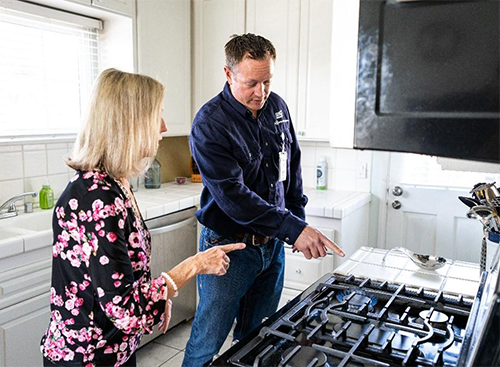
-
Keep the burners and range top clean to prevent grease fires.
-
Don’t install aluminum foil in the oven or range top; it can interfere with exhaust vents and burner ignition operations.
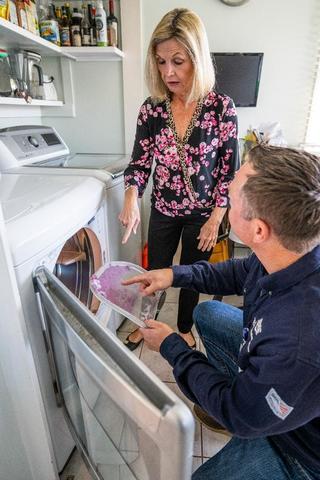
- Always vent your natural gas dryer outdoors. It’s a fire risk to exhaust into an attic, chimney, wall, ceiling or concealed space.
- Use only approved metal vent ducting material. Plastic and vinyl are not approved for gas dryers.
- Check the exhaust duct regularly to make sure it’s not crushed or restricted.
- Periodically have a qualified professional clear the interior of the exhaust duct.
